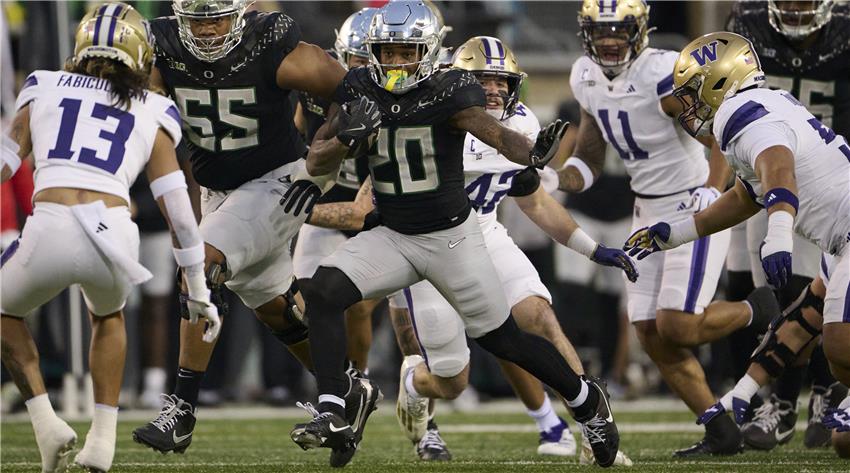
Breaking Down Team Strategies for Draft Success
With the NFL Draft fast approaching, teams across the league are entering a pivotal phase of strategic preparation, conducting comprehensive roster evaluations, exploring trade opportunities, and fine-tuning their draft-day plans.
While some selections seem almost inevitable, such as Miami quarterback Cam Ward, who is projected to be taken by the Tennessee Titans as the first overall pick, the remainder of the first round is shaping up to be highly unpredictable.
Success in the NFL Draft hinges on much more than selecting top-ranked talent, it’s a careful blend of strategy, foresight, and understanding team needs. Each franchise enters the draft with unique priorities, whether that’s filling roster gaps, planning for future contract challenges, or trading for long-term value. The decision-making process in the first round alone can involve months of scouting, analytics, and internal debate. Some teams prioritize immediate impact, while others play the long game, building depth and flexibility.
As fans and analysts dissect these moves, the excitement around the draft also extends into other areas of entertainment. And for those dabbling in sports wagering options, the list of free bet casinos curated by NoDepositFriend offers a fun way to get in on the action—without the risk.
Join us as we break down how NFL franchises approach the draft strategically, turning selections into long-term assets and using every pick to shape a winning future.
Determine the Order
The NFL draft order plays a pivotal role in shaping the future of a franchise. Teams with higher draft picks are in a better position to land elite prospects, while those selecting later in the round may need to be more strategic in their choices or look to trade to improve their standing. While the basic rule is that the worst teams pick first and the Super Bowl champions pick last, the actual order is influenced by several key factors, including performance, playoff progression, and a series of tiebreakers.
The first 18 picks are reserved for teams that did not make the playoffs, ranked in reverse order of their regular-season records. However, when multiple teams end the season with identical records, the situation becomes more complex. In these cases, the NFL uses tiebreakers like strength of schedule, the combined win percentage of a team’s opponents. If that still doesn’t separate the teams, additional criteria such as divisional and conference records—or even head-to-head matchups, are employed to determine the order.
For playoff teams, the draft position depends on how far they advanced in the postseason. Teams eliminated in the wild card round pick earlier, while those reaching the conference championships fall later in the order. The Super Bowl runner-up picks 31st, and the champion rounds out the first round at 32nd. Trades can also have a significant impact, as teams may acquire multiple first-round picks, or have none at all, due to past deals.
Evaluate Player Potential
Evaluating talent is both an art and a science, requiring a comprehensive understanding of physical performance, mental fortitude, and intangible qualities that contribute to success at the professional level. To make the most informed decisions, franchises rely on structured scouting systems that combine analytics, film study, Pro Day performances, and private workouts.
Speed and agility are tested through the 40-yard dash and shuttle runs, while strength is assessed through bench presses and explosive movement drills. Position-specific workouts, such as throwing accuracy for quarterbacks or block-shedding for defensive linemen, provide deeper insights into a player's readiness for the next level. However, raw athleticism only tells part of the story.
Mental capabilities are also highly valued, with evaluators focusing on decision-making, football IQ, adaptability, and performance under pressure. Cognitive tests, film analysis, and situational drills help reveal how quickly a player processes information and reacts in real time, skills that can be the difference between a good player and a great one.
Trading Picks
Most NFL teams will, at some point, need to engage in trades, which can shape a team’s identity for years to come, if executed correctly, of course. It’s all about balancing immediate roster needs with a broader vision for sustainable success. This can unfold in one of three ways:
Trading Up
Trading up occurs when a team improves its position in the draft order by trading away some of its current draft picks, typically lower-round ones, or other assets such as future picks or players.
Teams often trade up when they want to secure a top prospect before another team can select them. While trading up provides an opportunity to draft a more valuable player, it comes at the cost of giving up valuable resources. As the saying goes, everything has its price.
Trading Down
On the other end of the spectrum during the NFL draft teams can opt to move back in the order by exchanging their current pick for additional draft picks or other assets. This approach allows teams to accumulate more selections, increasing their opportunities to add depth and talent across multiple positions. Teams that trade down are typically focused on building for the future, rather than prioritizing immediate needs.
Compensatory Picks
During the NFL Draft, teams may find themselves in a position where they lose key players to free agency. This is where the NFL’s compensatory pick system comes into play. For example, if a team loses several high-performing players to other teams and doesn't sign enough or similarly skilled free agents, they can receive compensatory picks in return, which can be used to further strengthen their roster.
Use Time Wisely
Time is of the essence in the NFL Draft, with each team given a strict 10-minute window to make its first-round selection. Teams can either make quick picks if everything goes according to plan or take their time to use the full clock. However, the most important thing is not to miss the deadline, as this would allow the next team to jump ahead in the draft order.
The best approach is to be prepared for both the best- and worst-case scenarios, with ranked player lists and backup plans ready before the team is even on the clock. Efficient use of time is crucial, because one well-timed move can significantly impact the course of a season.
